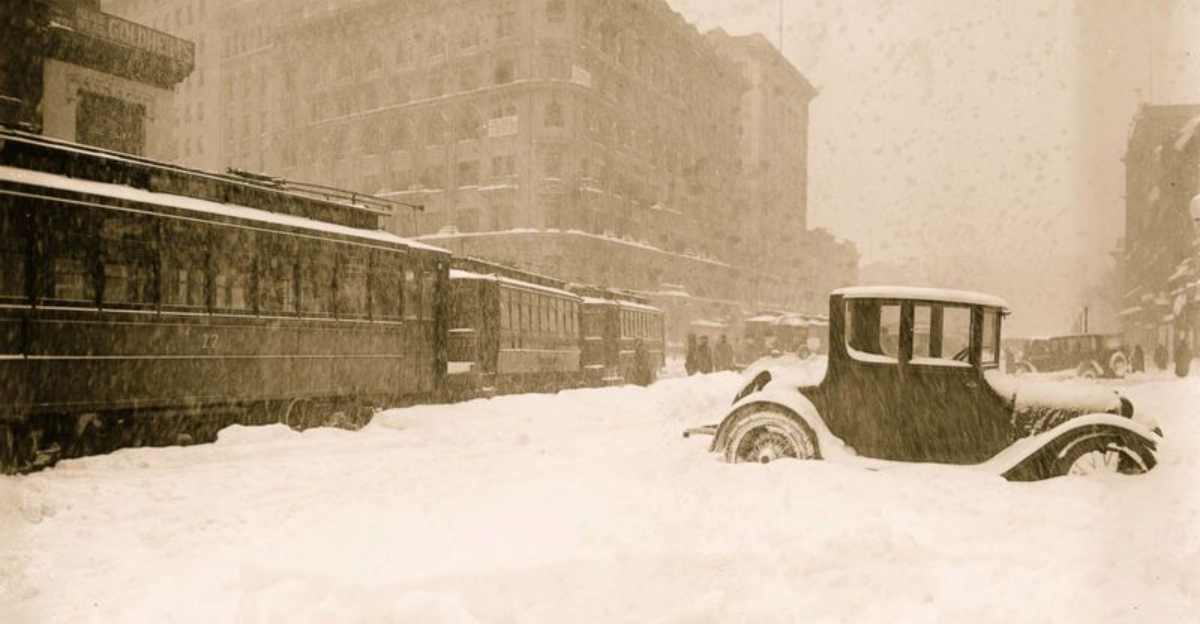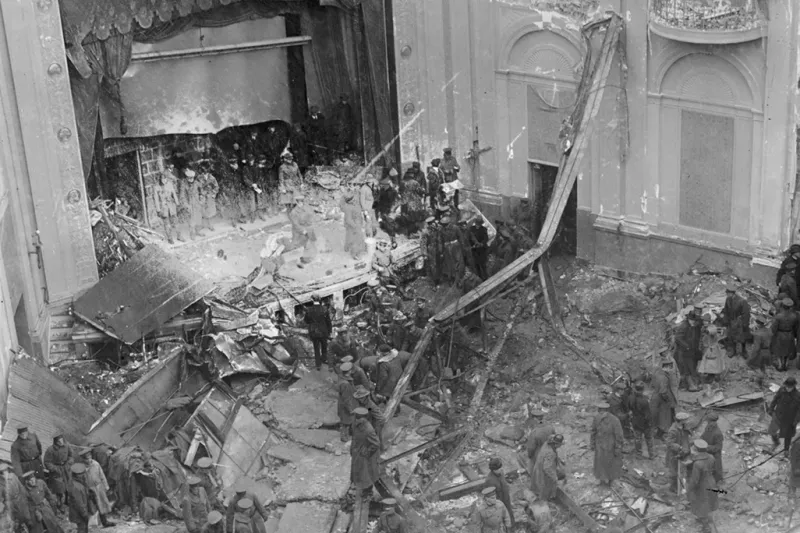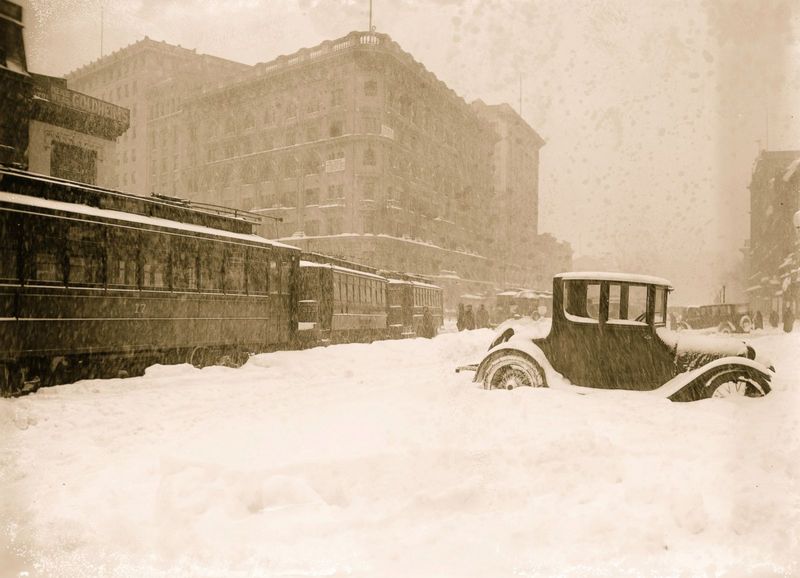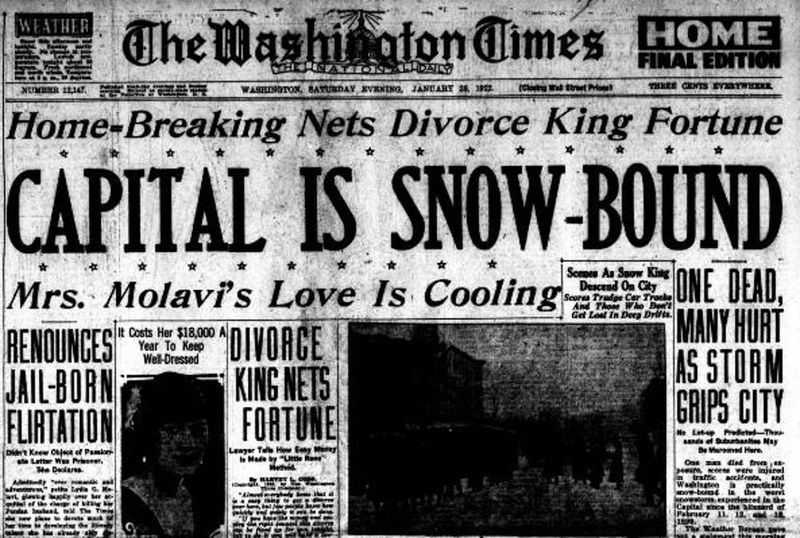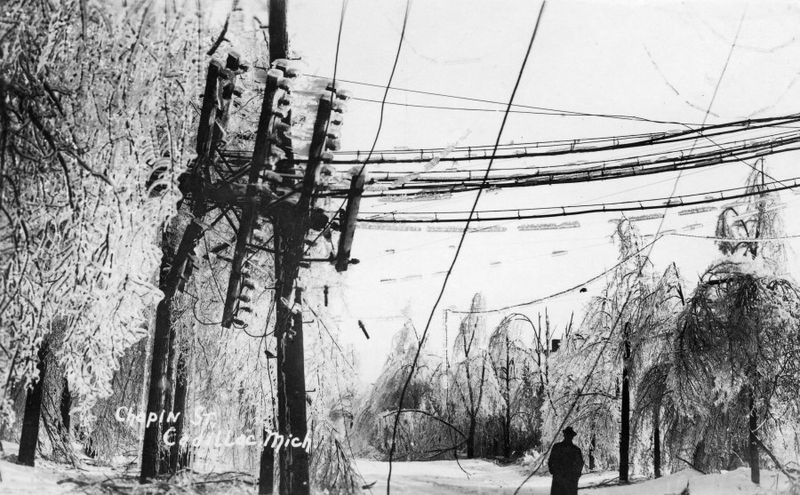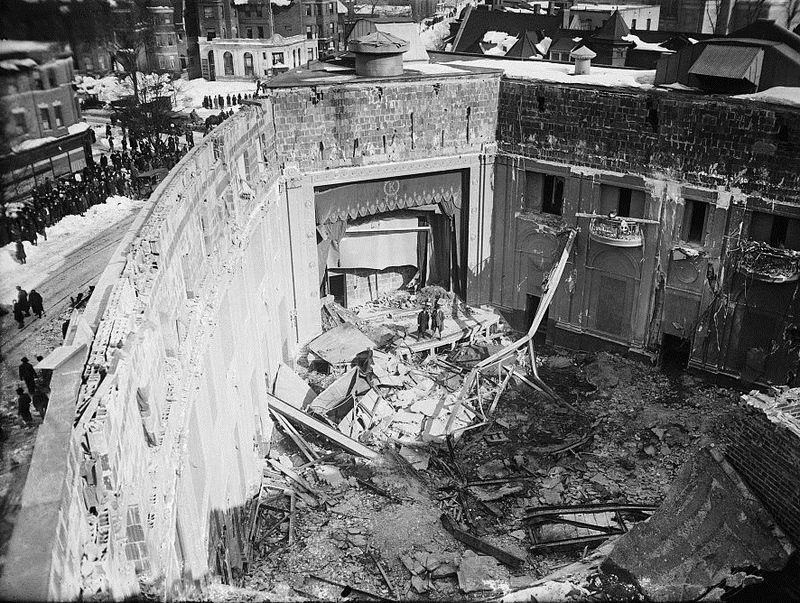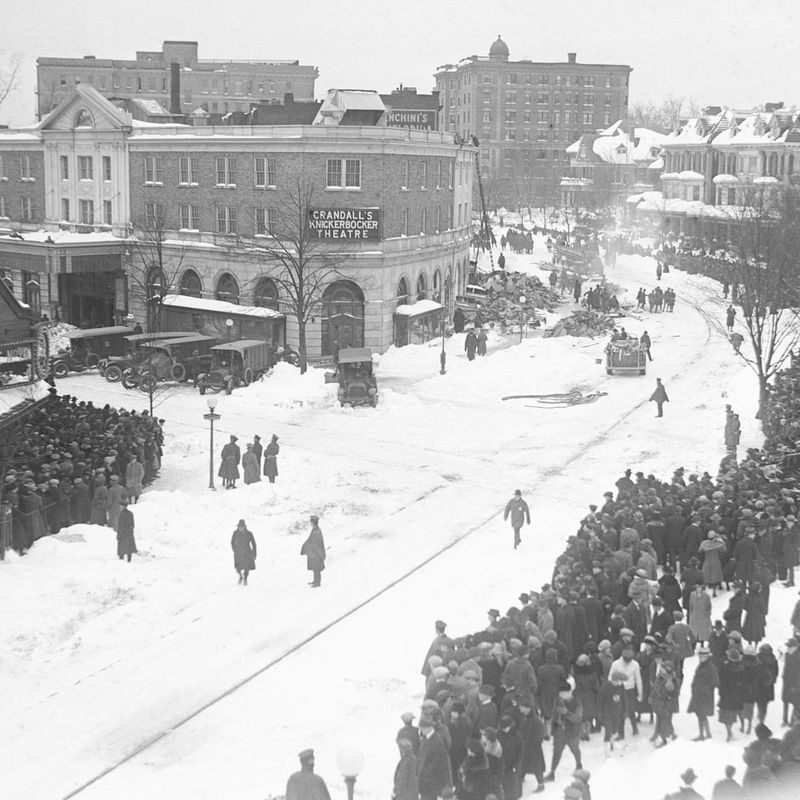The year was 1922. While flapper fashion and jazz were all the rage, Mother Nature had her own dramatic plans. In late January, Washington D.C. was hit by a snowstorm so massive and destructive that it still holds the record as the worst in the city’s history. Dubbed the “Knickerbocker Storm,” after a tragic theater collapse during the blizzard, it left behind a trail of devastation, death, and unforgettable tales. Here are 10 chilling facts about the storm that froze the nation’s capital in its tracks.
1. It Dumped Over 2 Feet of Snow—Fast
Picture this: snow cascading relentlessly over Washington D.C., transforming the bustling city into a white desert within hours. Between January 27 and 29, 1922, the blizzard didn’t just flirt with snowfall records; it shattered them. Over 28 inches of snow fell in a relentless 24-hour blizzard, creating a scene straight out of a winter fairy tale.
But this wasn’t the kind of snow children play in; it was a force of nature that halted life. The capital found itself in the icy grasp of the most monumental snowstorm it had ever seen.
2. The Knickerbocker Theatre Disaster Killed 98
Amidst the tranquil descent of snowflakes, tragedy struck with deafening silence. On January 28, 1922, the roof of the Knickerbocker Theatre succumbed to the snow’s heavy burden. During a Saturday night screening, the ceiling came down, claiming 98 lives and shattering the peace of the theater’s darkened halls.
The event stands as the deadliest building collapse in D.C. history, etched permanently into the annals of the city. As rescuers scrambled amidst the snow, the blizzard’s brutality was laid bare for the world to see.
3. The City Was Totally Paralyzed
Imagine a city brought to its knees, powerless against nature’s icy wrath. The blizzard didn’t just touch D.C.; it swallowed it whole. Streetcars froze in their tracks, and trains disappeared beneath snowdrifts. Even the White House staff resorted to shovels, carving paths through the relentless white.
With the absence of modern snowplows, the city came to a grinding halt. Days passed in this frozen standstill, as life seemed to pause under winter’s unyielding grasp, leaving citizens stranded in a chilling embrace of snow.
4. It Wasn’t Just DC—The Storm Spanned the East Coast
The 1922 blizzard was no respecter of borders. Stretching its icy fingers from Georgia to Pennsylvania, it wreaked havoc across the East Coast. Washington D.C. may have borne its brunt, but cities far and wide felt the storm’s chilling touch.
Reports of chaos and heavy snowfall echoed along the coast, from bustling metropolises to quiet towns. The storm’s reach created a shared struggle, uniting communities under blankets of snow and stories of survival, as the East Coast weathered one of its most formidable meteorological events.
5. Weather Forecasting Was Primitive
In 1922, predicting the weather was more art than science. Meteorology was still finding its footing, leaving the public with little more than vague hints of what was to come. Descriptions like “unsettled weather” did little to warn Washingtonians of the impending blizzard.
The killer storm struck a city largely unprepared, highlighting the era’s rudimentary forecasting capabilities. As snow piled high, the need for advancements in meteorological science became painfully clear, setting the stage for future innovations in weather prediction.
6. Communication Lines Were Cut
As the snow thickened, so did the silence—communication lines were felled like dominoes under the storm’s weight. Telephone and telegraph poles succumbed, isolating Washington D.C. from its neighbors.
This severance of communication plunged the city into an eerie quiet, complicating rescue efforts and leaving communities to fend for themselves. The blizzard’s impact was felt not just in inches and cold, but in the chilling realization of disconnectedness in the heart of a snow-covered metropolis.
7. Entire Buildings Collapsed
The Knickerbocker wasn’t alone in its downfall. Across Washington D.C., buildings bowed under the storm’s relentless weight. Churches, homes, and other structures met similar fates as roofs caved in one by one.
The architectural devastation served as a stark reminder of the era’s construction limitations, with many buildings unprepared for such heavy snow loads. Each collapse told a story of vulnerability, urging the city to reevaluate its building standards in the wake of such destruction.
8. It Changed Building Codes Forever
In the wake of devastation, lessons were learned. The tragedy of the Knickerbocker and other collapses sparked a fervent push for change. Public outcry led to revised construction codes, emphasizing the importance of snow-load standards.
This shift marked a turning point in architectural safety, as D.C. sought to prevent future tragedies. The blizzard’s legacy was not just in its snow but in the blueprints that followed—plans ensuring that no roof would again fall victim to such a merciless storm.
9. It Was a National News Sensation
News of the blizzard traveled as rapidly as the storm itself. Across the nation, headlines screamed of the Knickerbocker Disaster and the snow-choked streets of D.C. The tragedy captured public imagination, sparking debate over safety, forecasting, and responsibility.
As photographs of the crushed theater and frozen city circulated, the blizzard became a nationwide spectacle, a chilling reminder of nature’s unpredictable fury. The nation watched, absorbed by a story of survival and the stark beauty of a city encased in ice.
10. It’s Still the Worst Snowstorm in DC’s History
Time has marched on, yet the blizzard of 1922 remains etched in memory. In the century since, no other storm has rivaled its ferocity or snowfall total in Washington D.C. Other blizzards have come and gone, but none have overshadowed the record-setting snowfall.
The killer blizzard’s mythic status endures, a benchmark of meteorological might and urban resilience. Its story is one of nature’s raw power and the enduring spirit of those who weathered the storm, defining a winter for the ages.
